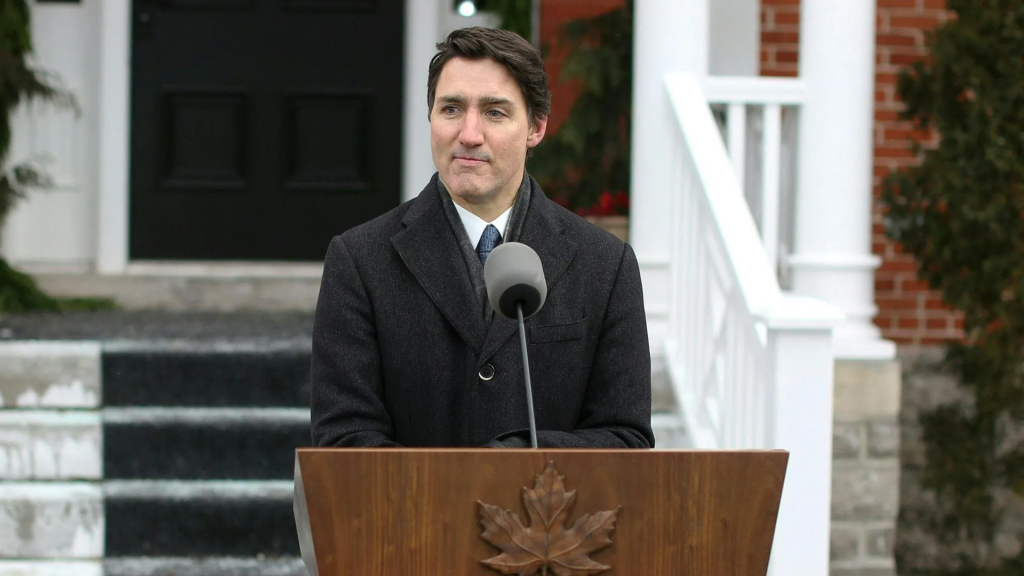Canadian Prime Minister Justin Trudeau has announced his decision to resign, marking the end of his nearly decade-long tenure as the country’s leader. Trudeau’s resignation, which he plans to formalize on March 24, 2025, comes amid growing political pressures, declining public support, and internal party dissatisfaction.
The move has left many asking, “Did Justin Trudeau resign?” and “Why did Justin Trudeau resign?” Let’s explore the reasons behind his decision and its potential impact on Canada’s political future.
Trudeau Confirms His Resignation
Speaking outside his Ottawa residence, Rideau Cottage, on January 6, 2025, Trudeau confirmed he would step down once a new Liberal Party leader is elected through a nationwide competitive process.

“I truly feel that removing the contention around my leadership is an opportunity to bring the temperature down,” he said. Trudeau emphasized that stepping aside was in the best interest of Canada, allowing Parliament to reset and refocus.
Until March 24, Trudeau will remain as prime minister, overseeing the transition of power.
Why Did Justin Trudeau Resign?
Many reason that has lead to Trudeau’s resignation, the decision reflects a recognition that his continued leadership could further polarize Canadian politics. By stepping aside, he aims to give Parliament a chance to “reset” and refocus on serving Canadians.
Internal Party Struggles
Trudeau’s decision follows increasing criticism from within his own party. In December 2024, Deputy Prime Minister Chrystia Freeland resigned, citing disagreements over Trudeau’s handling of U.S. trade challenges posed by President-elect Donald Trump.
Freeland’s departure exposed growing fractures within the Liberal Party, with many members doubting Trudeau’s ability to lead them into the next election.
Declining Public Support
Years of rising housing costs, economic uncertainty, and contentious policies have eroded Trudeau’s popularity. Recent polls show the Liberal Party trailing the opposition Conservatives by a significant 21 points, reflecting public dissatisfaction with the current government.
Economic and Geopolitical Challenges
Trudeau’s resignation also comes amid economic difficulties and strained relations with the United States. Although inflation in Canada has fallen below 2%, unemployment remains high at over 6%. Meanwhile, Trump’s threats of 25% tariffs on Canadian goods have added pressure to Trudeau’s government.
Trudeau’s November 2024 meeting with Trump at Mar-a-Lago failed to yield progress, further highlighting the challenges facing his administration.
Justin Trudeau’s Time As Prime Minister
Achievements
Since assuming office in 2015, Trudeau implemented several progressive policies, including the legalization of cannabis, a national carbon tax to combat climate change, and the appointment of Canada’s first gender-balanced Cabinet. His government also provided extensive financial support during the COVID-19 pandemic, helping stabilize the economy.
Criticism and Challenges
However, Trudeau’s leadership has been marred by controversies. His handling of housing shortages, immigration policies, and pipeline expansions drew criticism from various political factions. Scandals and accusations of ethics violations also tarnished his reputation.
Growing polarization under his leadership, fueled by vaccine mandates and climate policies, further divided the country. Anti-Trudeau protests became common, particularly in rural areas, where his name often appeared on protest flags alongside expletives.
Justin Trudeau’s Resignation: A Political Reset or Strategic Exit?
Justin Trudeau’s resignation appears to be a calculated decision to allow the Liberal Party to reset and regain momentum ahead of the 2025 election. By stepping aside, Trudeau aims to reduce political polarization and pave the way for new leadership to address Canada’s pressing challenges.
As Trudeau prepares to leave office, Canada enters a period of uncertainty. The upcoming leadership election and federal vote will determine the country’s direction in the coming years.


